On my own, I discovered ways to deal with the challenges (problems, near disasters) that arose while I was building (that is the operative word here) my daughter's wedding dress. I figured out how to make the perfect wedding veil (and I share that with you in a separate article), how to make a pleated bodice, how to make those cute little cover-ups for the ceremony that make the dress modest enough for the religious part of the wedding, how to work with chiffon - and how to make a dress when you cannot find a pattern for what you want.
In this article, I will show you the problems I faced and how I solved them.
Let me be honest - this was the second wedding dress I made. My younger daughter married about two years earlier and asked me to make her dress. We picked out lovely beaded-lace material and she asked it be made using a dress pattern with which I had already made her a dress. It was an easy pattern and the fabric was what made the dress magnificent. Therefore, when Keren asked me to sew her wedding dress this year, I happily agreed. I was unaware at that point that she would plunge me into a project that would challenge my skills beyond what I ever imagined possible.
I loved every minute of it.


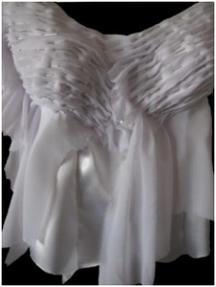


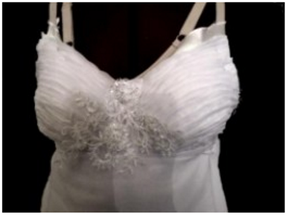 Once I was satisfied the pleats were even and a good width (and had Keren's approval as well), I set about sewing them in place. I sewed through the underlying pleat, the satin lining and the girdle bra, making the stitch just inside the pleat that would lay over it. This way the stitches were invisible from the outside. In places, where the curvature of the bra necessitated, I made extra stitches to hold the shape. Stitching through the bra makes this bodice strong and ensures it will hold its shape.
Once I was satisfied the pleats were even and a good width (and had Keren's approval as well), I set about sewing them in place. I sewed through the underlying pleat, the satin lining and the girdle bra, making the stitch just inside the pleat that would lay over it. This way the stitches were invisible from the outside. In places, where the curvature of the bra necessitated, I made extra stitches to hold the shape. Stitching through the bra makes this bodice strong and ensures it will hold its shape.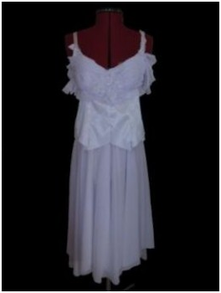
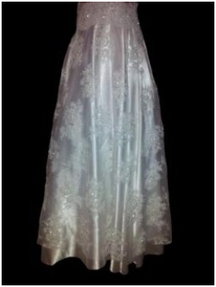 After this, I made the waistband. I cut out a piece of the selvedge - that band along the edge of the lace fabric that is densely laced - a bit longer than the waistband had to be according to Keren's measurements. I made sure that the waistband was symmetrical, such that there was a large lace flower centered in the center of the waistband. Then I cut out a piece of satin of the same length and width as the lace waistband. After folding in along the lengthwise edges of the satin (on the inside), the satin came only to the edge of the fluted edge of the lace, so that the wavy part of the lace was not lined. After basting together the satin and lace, I pinned them to the long skirt with the right side of the dress against the wrong side of the waistband and along the mid-line of the waistband.
After this, I made the waistband. I cut out a piece of the selvedge - that band along the edge of the lace fabric that is densely laced - a bit longer than the waistband had to be according to Keren's measurements. I made sure that the waistband was symmetrical, such that there was a large lace flower centered in the center of the waistband. Then I cut out a piece of satin of the same length and width as the lace waistband. After folding in along the lengthwise edges of the satin (on the inside), the satin came only to the edge of the fluted edge of the lace, so that the wavy part of the lace was not lined. After basting together the satin and lace, I pinned them to the long skirt with the right side of the dress against the wrong side of the waistband and along the mid-line of the waistband.
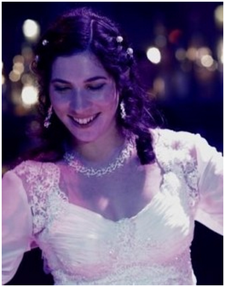 I only have a photo from the front of the dress. You can see here how the bodice of the sewing pattern actually forms wide lace straps for the dress. I first sewed two shoulder seams of the lace bodice and then sewed the sleeves onto the bodice on each side; finally, I sewed the seams: the side seam of the bodice and the underneath seam of the sleeves. Then, I pinned the bodice into place on the pleated bodysuit foundation while my daughter was trying on the dress. In this way I could ensure that the bodice was perfectly symmetrical and fit her form exactly. Since the lace is a bit stretchy, I was able to pull it firmly into place so there would be no loose fabric.
I only have a photo from the front of the dress. You can see here how the bodice of the sewing pattern actually forms wide lace straps for the dress. I first sewed two shoulder seams of the lace bodice and then sewed the sleeves onto the bodice on each side; finally, I sewed the seams: the side seam of the bodice and the underneath seam of the sleeves. Then, I pinned the bodice into place on the pleated bodysuit foundation while my daughter was trying on the dress. In this way I could ensure that the bodice was perfectly symmetrical and fit her form exactly. Since the lace is a bit stretchy, I was able to pull it firmly into place so there would be no loose fabric.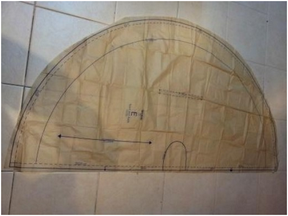
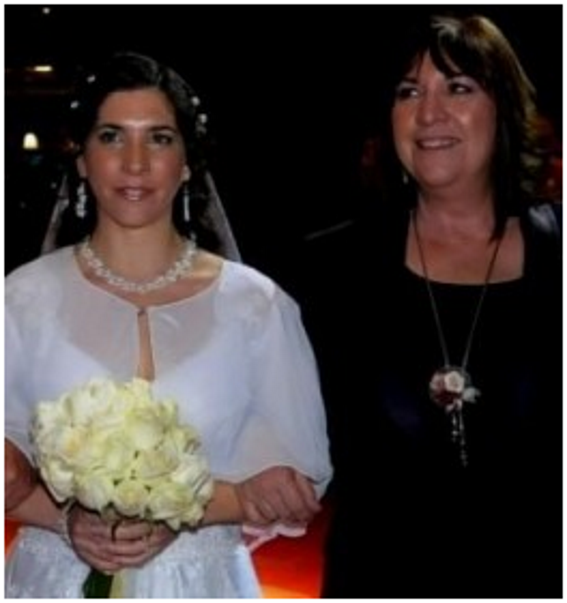
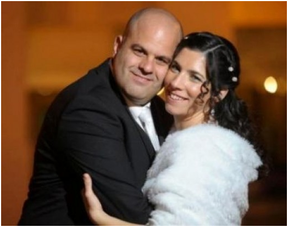
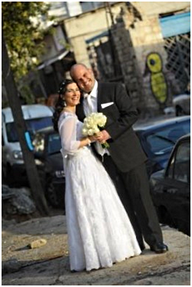 le time with the hems of the short dress - there were two layers of the dirndl skirt and one layer that I added later as a kind of apron because the two layers were not opaque enough. I cut the apron layer diagonally for extra interest. Sewing the hems was impossible with my regular machine. I decided to go to the next step of professionalism (sic) and buy a serger. That saved my life.
le time with the hems of the short dress - there were two layers of the dirndl skirt and one layer that I added later as a kind of apron because the two layers were not opaque enough. I cut the apron layer diagonally for extra interest. Sewing the hems was impossible with my regular machine. I decided to go to the next step of professionalism (sic) and buy a serger. That saved my life.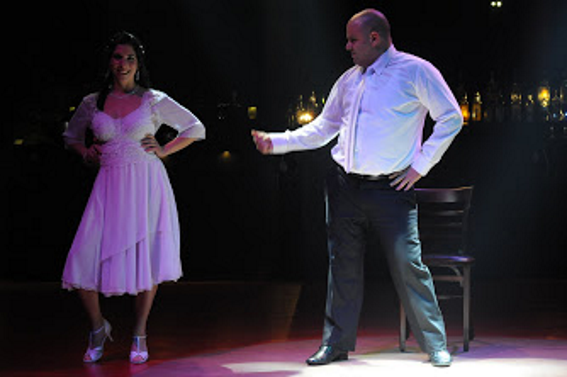
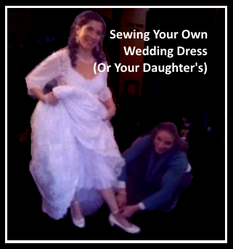

 Visiting an Art Gallery With a Two-Year-Oldon 07/27/2015
Visiting an Art Gallery With a Two-Year-Oldon 07/27/2015
 Using the News to Enhance Jewish Identity in Jewish Kidson 07/24/2015
Using the News to Enhance Jewish Identity in Jewish Kidson 07/24/2015
 Xi'an - Not Just Terracotta Warriorson 06/09/2015
Xi'an - Not Just Terracotta Warriorson 06/09/2015
 Planning for Grad Schoolon 01/29/2015
Planning for Grad Schoolon 01/29/2015

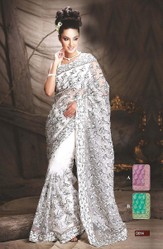
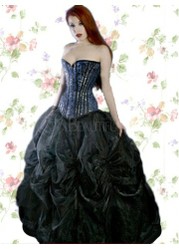
Comments
What a lovely thought, Pam - that my granddaughter will one day will the dress as well. Thanks.
I hate sewing! I am so amazed that you were able to create such a beautiful item as your daughter's wedding dress. It turned out so lovely - what a cherished keepsake. I hope she has a daughter who will wear it too...
It must have made you very proud to be wearing clothes your mother sewed for you herself.
Wow - that's amazing. I cannot imagine myself stitching my own wedding dress but yes my mother was very talented, she used to sew our clothes including my sisters as well.